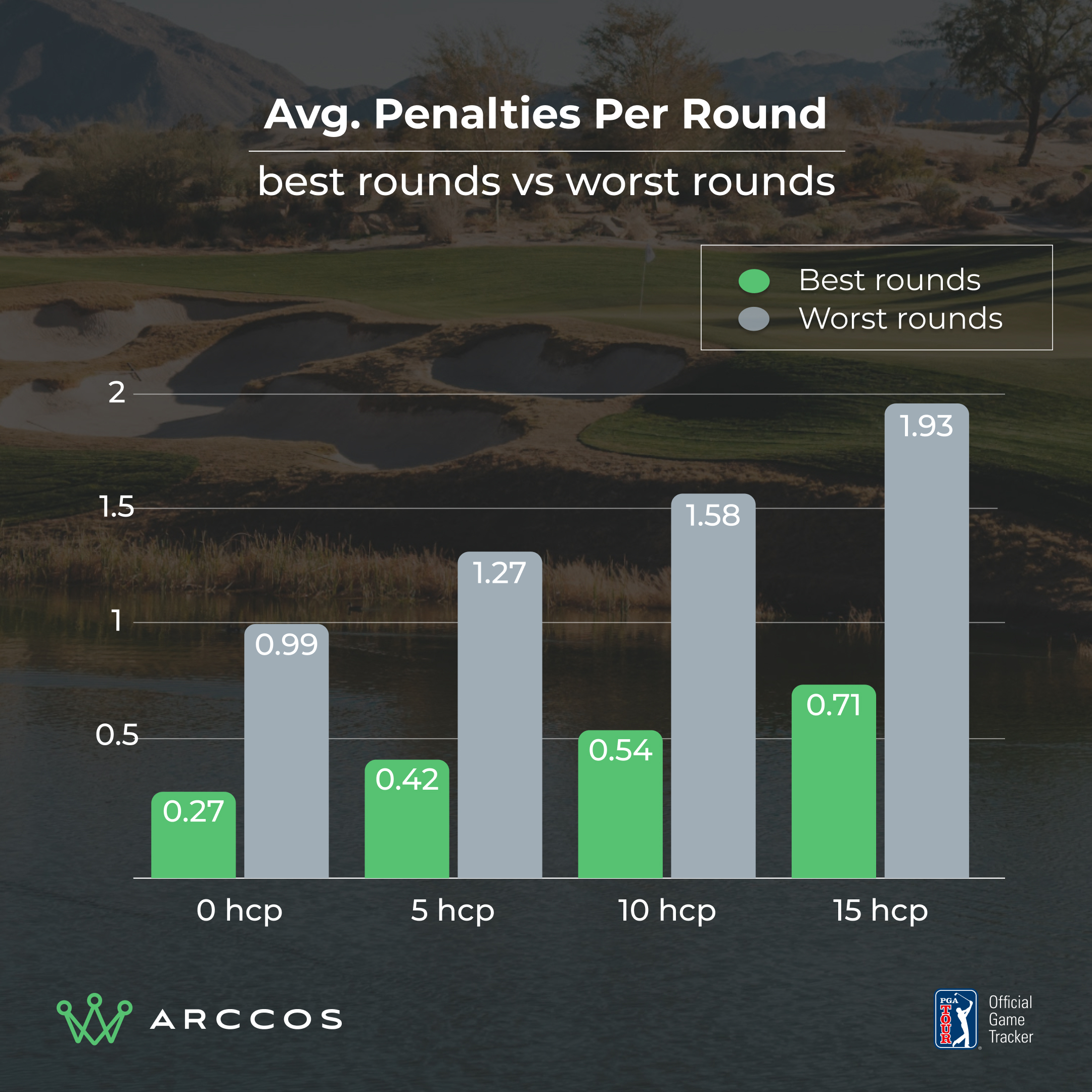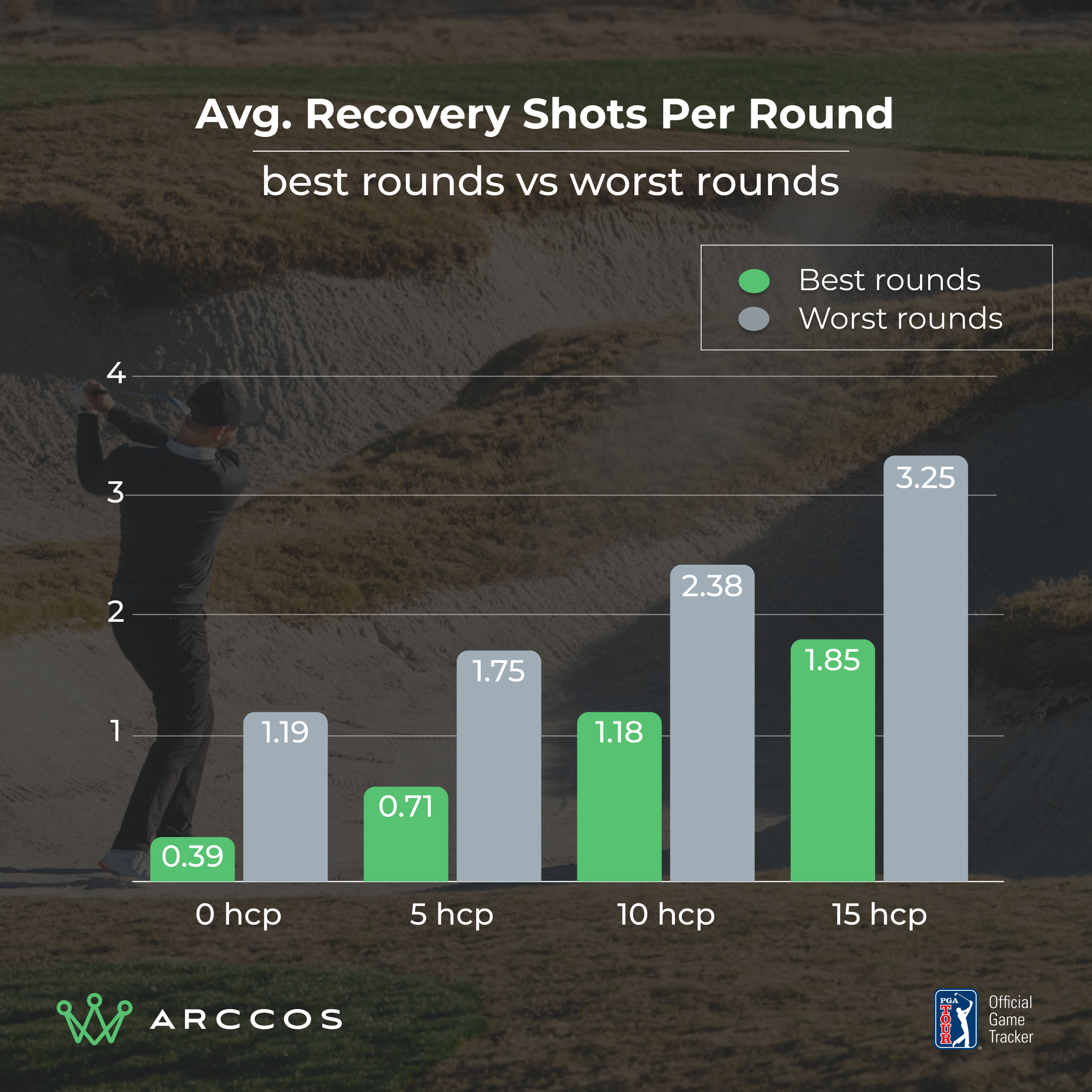
When analysing their performance, most golfers will look at how far they hit their drives or how many greens in regulation they hit on average, but spending some time reviewing the less glamorous side of the game could help you to save shots in the long run.
While hitting fairways isn't the most important thing in the world, keeping the ball in-play is. Amateur golfers will be more than aware of the damaging impact penalty strokes and recovery shots can have on your scorecard, but now the latest Arccos data reveals just how often we put ourselves in this position...
How Many Strokes Do Amateur Golfers Lose Each Round Due To Wayward Shots?
While we do our best to avoid them, penalty strokes can be damaging to a player's momentum, confidence and score. In a good round we might avoid the penalty areas all together, with a few lucky bounces that allow you to get out of trouble on the course, but data suggests that the potential for bigger numbers lurks no matter how well you are playing.
As you can see in the chart below, the difference between an amateur golfer's best round and worst round is significant in relation to penalty strokes. As expected, those numbers increase in line with the handicaps, with the disparity between a 15-handicappers best and worst round being the greatest at 1.22 strokes.

At the other end of the spectrum, a scratch golfer accumulates roughly half the amount of penalty shots of a 10-handicapper, when both golfers are playing their relative 'best' rounds.
That gap greatly reduces when the same players play their 'worst' rounds, standing at a difference of 0.59 penalties, which could be due to the increased average distance off-the-tee taking wayward shots further into the hazards for the lower handicap golfer when the swing doesn't behave itself.
It isn't just penalty shots that cost us, however, as the graph below highlights. Recovery shots can be frustrating and require you to get creative, especially when you don't have a direct line to the green and find yourself in undesirable positions.
Scratch players hit an average of 0.39 recovery shots in their best rounds, which is almost half that of a 5-handicapper (0.71). A 10- (1.18) and 15-handicapper (1.85) play between one and two recovery shots per round on average in the best performances, so it's important not to get disheartened the next time you find your ball nestled at the base of a tree.

Similarly to penalty strokes, the gap isn't as wide between lower handicap golfers when you analyse recovery shots in their worst rounds, as the contrast between a scratch golfer and a 5-handicapper is just 0.56 strokes.
The variability between scratch players and 10-handicappers is exactly double in the same scenario (1.19 vs 2.38), and is almost three times as high when you compare scratch players to a 15-handicapper (1.19 vs 3.25).
From the data it's hard not to conclude that these things are going to happen no matter how good you are, but keeping the ball in-play as often as possible is far more important than finding the short grass off the tee. It's time to celebrate that squeezy slice that nestles in the rough and take the small wins on your way to banishing big scores from your card.







